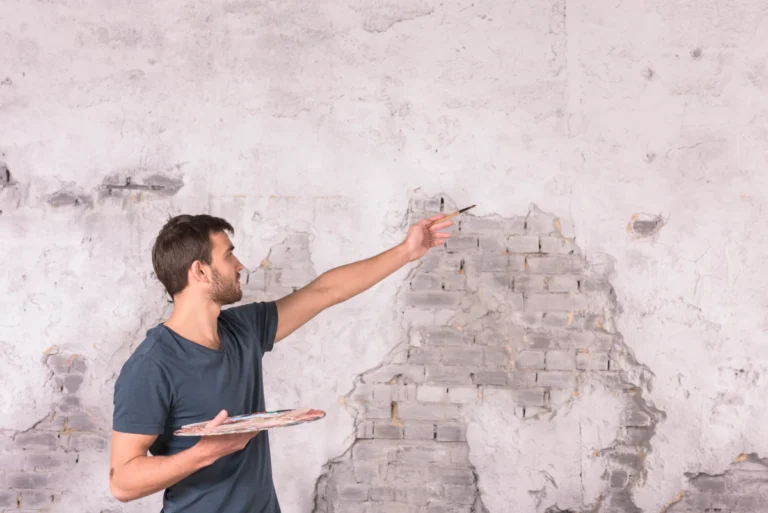Cracks in walls are a more common problem than people realize, especially in older homes or buildings that have undergone structural movements. Often, these cracks are merely cosmetic or the result of natural aging, but in some cases, they may hide serious structural risks.
Knowing how to tell the difference can be the key between a simple surface repair and an urgent intervention to prevent major damage to the property.

The most concerning issue is that many people don’t know when a crack is truly dangerous and overlook important warning signs such as deformations, displacements, or cracks that develop rapidly. Moreover, wall cracks can be caused by multiple factors: ground settlement, moisture, nearby construction work, structural errors, or even earthquakes.
That’s why properly identifying and classifying each type of crack is essential to ensure the safety of both the property and its occupants.
In this article, we explain how to recognize dangerous wall cracks, the different types that exist, when you should be concerned, and the steps you need to take to resolve the problem safely and permanently.
What Are Dangerous Wall Cracks?
Not all cracks are a cause for alarm. The truly concerning ones are those that compromise the structural stability of a building. Dangerous wall cracks are those that affect structural elements such as load-bearing walls, beams, columns, or foundations.
Their presence can indicate serious problems like ground subsidence, poor building design, or foundation failures.
These cracks are usually distinguishable by the following characteristics:
- Size and Depth: A dangerous crack is often wider than 3 mm and may be visible through both plaster and brick. If the crack goes through the entire wall, it’s not just a superficial fissure.
- Location: Structural cracks are commonly found in corners, load-bearing walls, where walls meet ceilings, or near doors and windows.
- Progression: If you notice a crack growing over time, extending, or widening, it is a clear sign of structural instability.
- Shape: Vertical cracks are often related to settlement movements, horizontal cracks are linked to lateral pressure or stress, and zig-zag cracks may indicate material weakness.
These types of cracks not only affect the appearance of your home but can also lead to serious consequences such as the partial or total collapse of the structure. That’s why it’s essential to detect them early and take professional action.
Types of Cracks You Should Watch Out For
Horizontal Cracks on Walls
Horizontal cracks are among the most concerning, as they are often associated with excessive lateral pressure, wall deformations, or stress coming from the surrounding soil. They frequently appear in basements, retaining walls, or exterior walls exposed to constant moisture.
These cracks can be caused by:
- Soil Pressure: Poor soil drainage can lead to water accumulation, pushing the walls inward.
- Foundation Failure: If the foundations were not properly designed to withstand specific loads, the wall may shift and crack.
- Differential Movements: When the ground settles unevenly, it generates stress that manifests as horizontal cracks.
If you notice a horizontal crack, especially in load-bearing walls, consult a structural expert as soon as possible.
Zig-Zag Cracks
Zig-zag cracks are common in brick or block walls. Unlike straight cracks, zig-zag cracks follow the pattern of the joints in the material, and they can indicate:
- Uneven Ground Settlement: If the soil beneath the foundation sinks irregularly, the wall reacts by opening in a zig-zag pattern.
- Poor Construction Work: Poorly built walls, lacking proper reinforcements, are more prone to this type of cracking.
- Structural Deterioration: Over time, building materials lose strength, which can lead to this type of crack.
Although zig-zag cracks are not always dangerous, they should be monitored carefully, especially if they increase in size or appear along with other signs such as wall tilting or fragments breaking off.
When Is It Necessary to Take Action?
You should act immediately if you notice any of the following warning signs:
- Cracks wider than 3 mm.
- Fissures that go all the way through the wall.
- Cracks that increase in size within a few weeks.
- Presence of dampness or water infiltration.
- Doors or windows that no longer close properly.
- Cracking or creaking noises coming from walls.
- Cracks on ceilings or floors that appear in multiple areas.
Any of these signs may indicate that the structure is under abnormal stress. In such cases, the safest option is to contact a qualified building inspection expert who can assess the real extent of the damage.
Tips to Prevent and Address Dangerous Wall Cracks
Prevention and timely action can save you from serious problems and costly repairs in the future. Here are some key recommendations:
1. Carry out regular inspections
Especially in older homes or in areas with clay or unstable soils. A technical inspection every so often helps detect problems before they worsen.
2. Monitor the evolution of cracks
Mark the crack with a pencil or use a crack monitoring gauge. If it grows, widens, or changes shape, it means the crack is active and requires immediate professional evaluation.
3. Control moisture
Water is one of the main enemies of building structures. Make sure there are no leaks, seepage, or persistent dampness near the foundations or exterior walls. Regularly check gutters and downpipes.
4. Maintain proper soil drainage
Prevent water from accumulating near the property. If you have a garden, ensure the terrain slopes away from the foundations. You can also install perimeter drainage systems if the area is prone to excess moisture.
5. Don’t cover cracks without identifying the cause
Painting over or filling a crack without knowing its origin can be a serious mistake. It may hide a growing structural problem. It’s always best to perform a technical assessment before attempting any repairs.
6. Consult qualified professionals
A building surveyor or a specialized inspection company can properly diagnose the issue, determine whether the crack is structural or superficial, and propose the safest, most durable solution. In some cases, structural reinforcement may be enough; in others, more extensive work on the foundations may be necessary.
Dangerous wall cracks should never be taken lightly. Behind a simple fissure, there could be a structural failure that compromises the stability of the entire home. The key is to observe carefully, interpret warning signs, and act promptly.

eAt Inspección de Viviendas in Barcelona, we have specialized technicians for detecting and assessing structural cracks. If you have concerns about the condition of your walls, we help you identify the root of the problem and offer you a professional and safe solution.
Contact us and request your inspection. Your peace of mind and the safety of your home shouldn’t wait.



